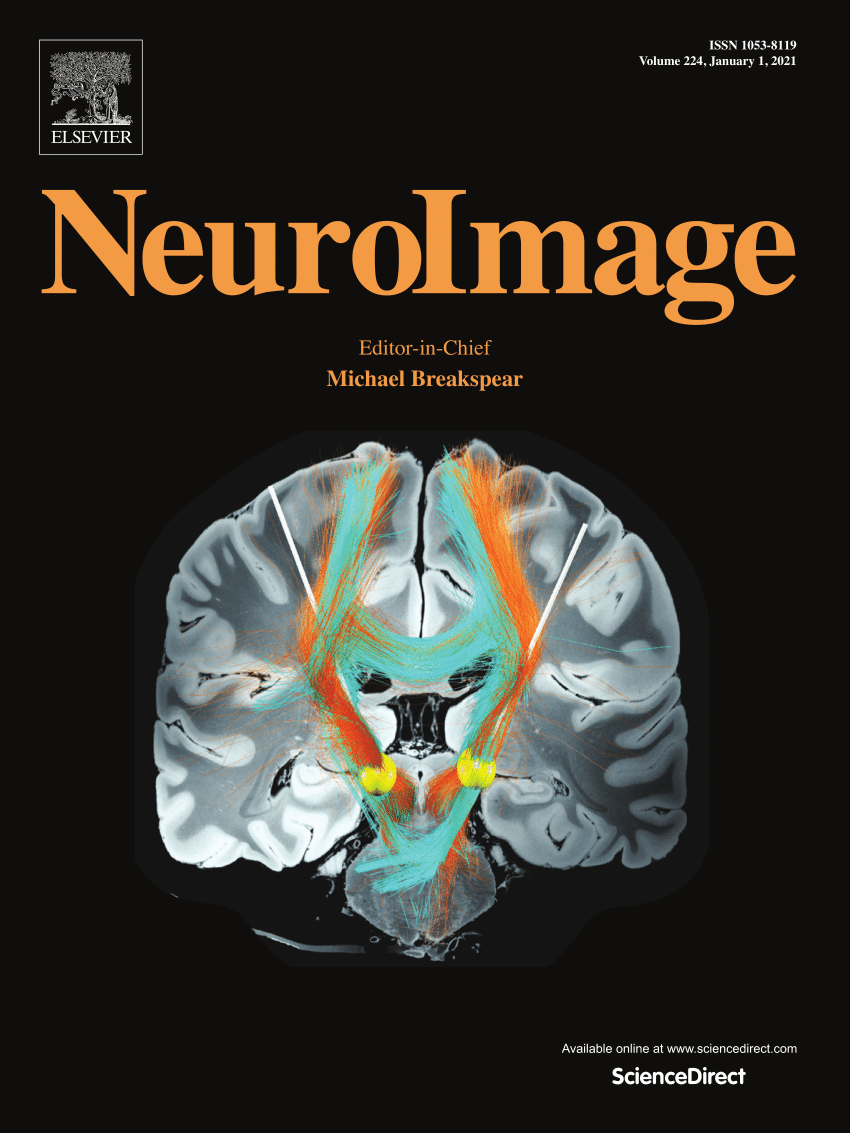The dorsomedial prefrontal cortex promotes self-control by inhibiting the egocentric perspective
IF 4.7
2区 医学
Q1 NEUROIMAGING
引用次数: 0
Abstract
The dorsomedial prefrontal cortex (dmPFC) plays a crucial role in social cognitive functions, including perspective-taking. Although perspective-taking has been linked to self-control, the mechanism by which the dmPFC might facilitate self-control remains unclear. Using the multimodal neuroimaging dataset from the Human Connectome Project (Study 1, N =978 adults), we established a reliable association between the dmPFC and self-control, as measured by discounting rate—the tendency to prefer smaller, immediate rewards over larger, delayed ones. Experiments (Study 2, N = 36 adults) involving high-definition transcranial direct current stimulation showed that anodal stimulation of the dmPFC reduces the discounting of delayed rewards and decreases the congruency effect in egocentric but not allocentric perspective in the visual perspective-taking tasks. These findings suggest that the dmPFC promotes self-control by inhibiting the egocentric perspective, offering new insights into the neural underpinnings of self-control and perspective-taking, and opening new avenues for interventions targeting disorders characterized by impaired self-regulation.
背内侧前额叶皮层通过抑制自我中心视角来促进自我控制。
背内侧前额叶皮层(dmPFC)在社会认知功能中扮演着至关重要的角色,其中包括透视法。尽管透视法与自我控制有关,但dmPFC促进自我控制的机制仍不清楚。利用人类连接组项目的多模态神经成像数据集(研究1,978名成人),我们在dmPFC和自我控制之间建立了可靠的联系。高清晰度经颅直流电刺激实验(研究2,N = 36名成人)显示,对dmPFC进行阳极刺激可降低延迟奖励的折扣率,并在视觉透视任务中降低自我中心视角的一致性效应,而非分配中心视角的一致性效应。这些研究结果表明,dmPFC通过抑制以自我为中心的视角来促进自我控制,从而为自我控制和视角选择的神经基础提供了新的见解,并为针对自我调节能力受损的疾病进行干预开辟了新的途径。
本文章由计算机程序翻译,如有差异,请以英文原文为准。
求助全文
约1分钟内获得全文
求助全文
来源期刊

NeuroImage
医学-核医学
CiteScore
11.30
自引率
10.50%
发文量
809
审稿时长
63 days
期刊介绍:
NeuroImage, a Journal of Brain Function provides a vehicle for communicating important advances in acquiring, analyzing, and modelling neuroimaging data and in applying these techniques to the study of structure-function and brain-behavior relationships. Though the emphasis is on the macroscopic level of human brain organization, meso-and microscopic neuroimaging across all species will be considered if informative for understanding the aforementioned relationships.
 求助内容:
求助内容: 应助结果提醒方式:
应助结果提醒方式:


